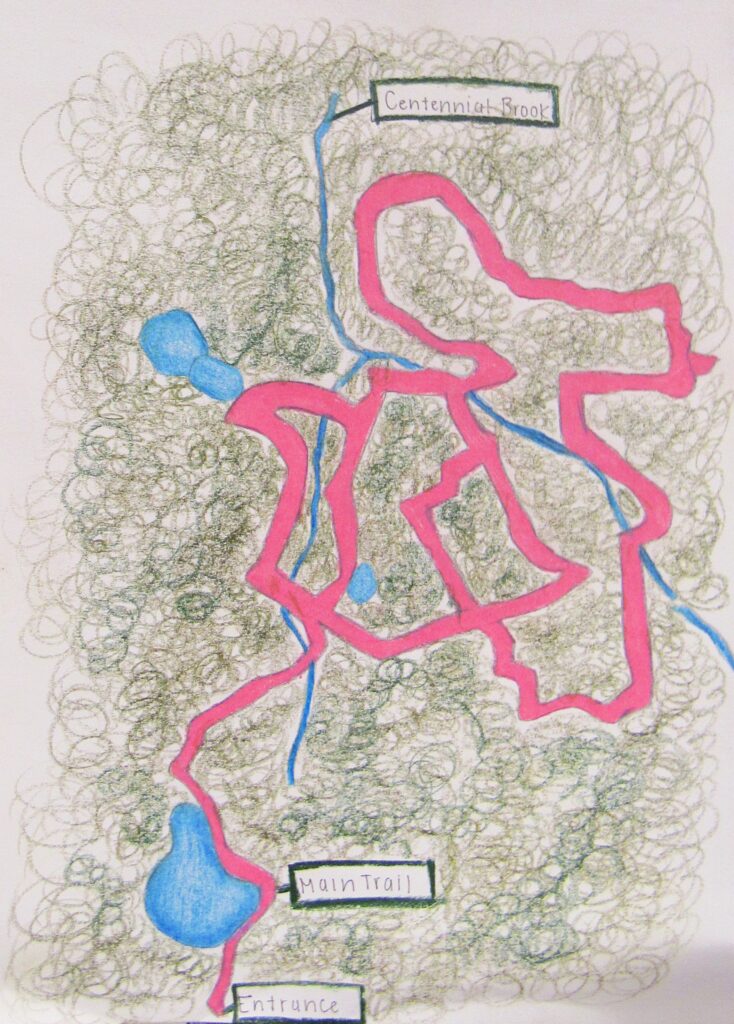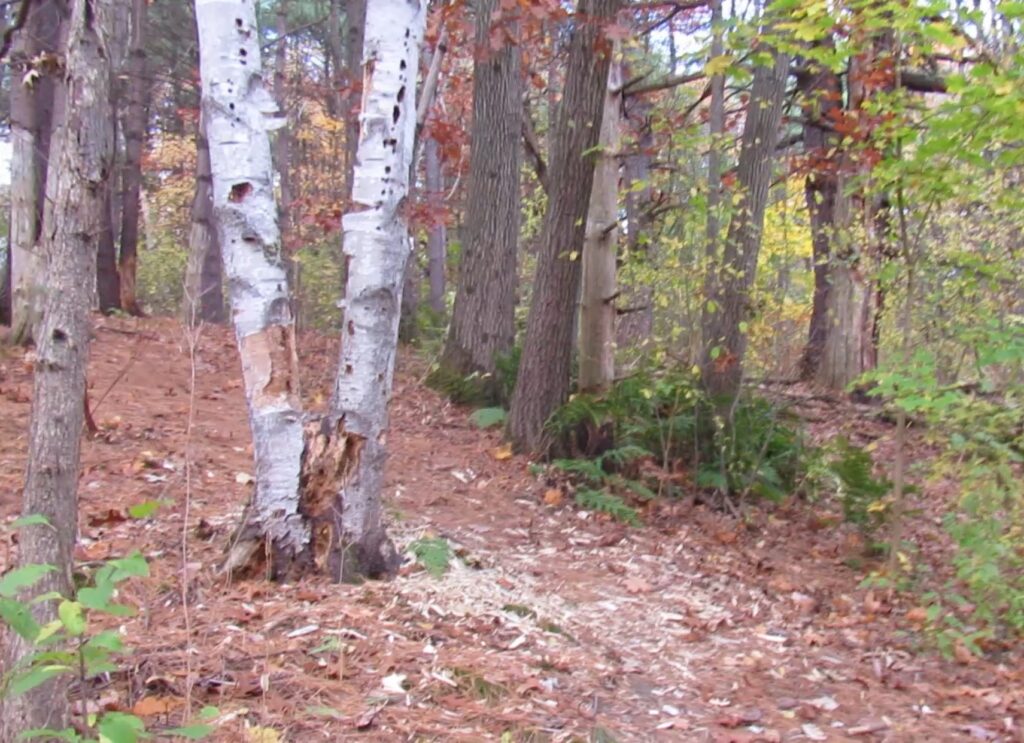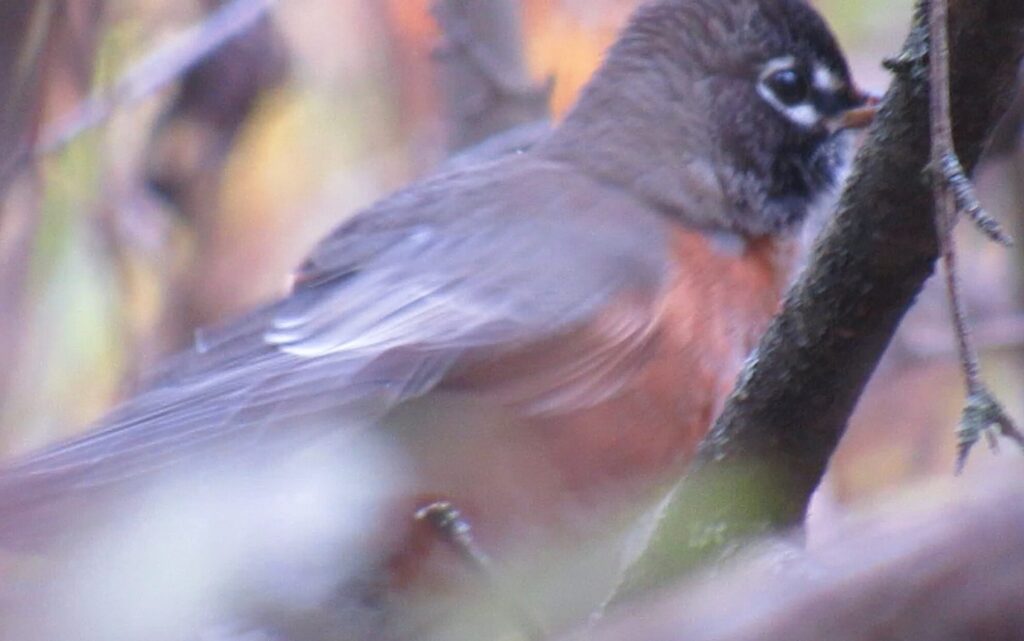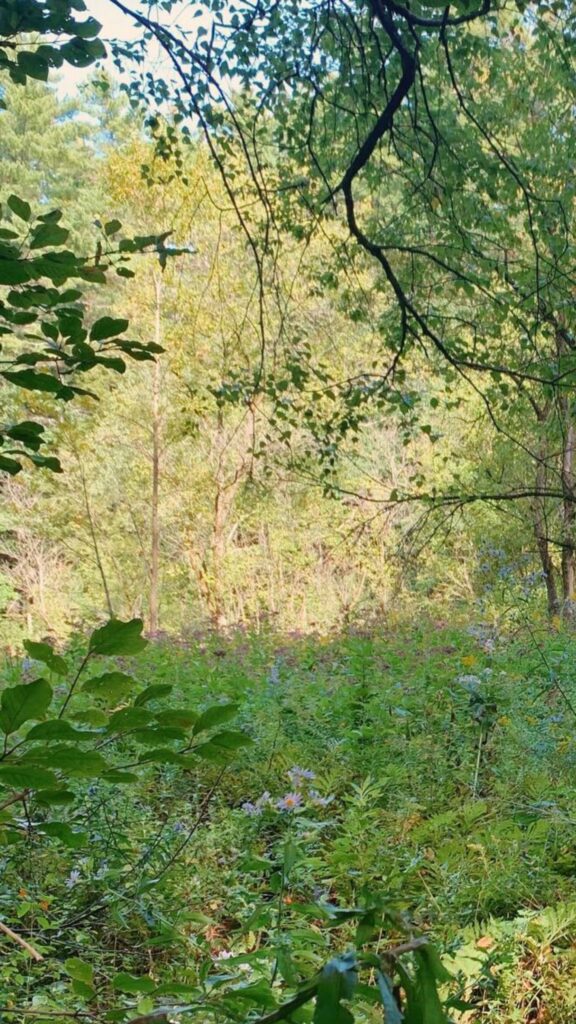
Changes in Vegetation
25 Oct 2020 Leave a comment
Throughout the month I have observed the physical changes of plant life in Centennial Woods as a result of the cooler autumn weather. The trees are beautifully colored red, orange, and yellow and are becoming more bare as the leaves fall. I also observed many young trees that were not able to survive with the weather change and older bent trees due to wind. Paper birch trees in particular are peeling more with pieces surrounding the base of the trees, as shown in the photo.

Wildlife
25 Oct 2020 Leave a comment

Centennial Woods are flourishing with a wide variety of birds. I have seen robin the most (shown in photo), I watched one swoop down to a small stream where it caught a small organism from the water then brought it back up to their nest. The largest bird I observed was a Great Blue Heron, these are common throughout the United States especially near rivers, wetlands, and streams. They can also be identified by their large distinguishable nests. Along with birds, small mammals in Centennial woods include squirrels, chipmunks, and beaver. It is easy to determine if beavers are in the area by the distinct cone shape left on tree stumps. Squirrels are very abundant and are found chasing each other up the trees.
Hello world!
11 Oct 2020 1 Comment
Welcome to UVM Blogs. This is your first post. Edit or delete it, then start blogging!
Woody Plants
11 Oct 2020 Leave a comment
- Sugar Maple
- Eastern White Pine
- Yellow Birch
- Black Cherry
- Boxelder
- Red Oak
- Honeysuckle (invasive)
- American Beech
- Norway Maple
- Poison Ivy
Vegetation
11 Oct 2020 Leave a comment
The most abundant group of plants in Centennial Woods is the ferns. Most of there ground, not including what has been cleared for trails is covered by a blanket of fern which is very beneficial in slowing runoff, absorbing excess nutrients, and they also provide shelter and protection for small wildlife. Next are the woody plants which are able to grow very tall due to the stable weather conditions. A lot of the over story is made up of Eastern White Pine which creates an acidic soil only suitable for the growth of more pines, which is why it makes up the majority. A much smaller portion of the vegetation is made up of herbaceous plants.
Introduction
11 Oct 2020 Leave a comment
Centennial Woods are located in the perfect place for UVM students to access. The area is only a short walk from my dorm at Central Campus Residence Hall, about 15 minutes, making it my go to when I need some time with nature. The incredible 65 acres are filled with a variety of vegetation, wildlife, aquatic ecosystems, remnants of human activity, and more. Anyone can visit Centennial Woods through the entrance found off of Catamount Drive, Burlington VT. I am looking forward to the next few weeks when I will continue to explore and become more immersed with the area.

Recent Comments